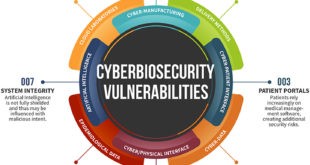In military terminology, a missile is a guided airborne ranged weapon capable of self-propelled flight usually by a jet engine or rocket motor. Missiles have five system components: targeting, guidance system, flight system, engine, and warhead. Missiles come in types adapted for different purposes: surface-to-surface and air-to-surface missiles (ballistic, cruise, …
Read More »Infrared Metamaterial Absorber
Metamaterials are artificial materials composed of periodic or aperiodic structures to have extraordinary electromagnetic characterizations. By properly tailoring the feature size of metamaterial, it can be realized electro-optic devices spanning the wavelength range from microwave, infrared (IR), visible to ultraviolet (UV) caused from the transformation optics. In view of …
Read More »Automotive embedded systems
Car technology is rapidly increasing. What was once science fiction, is quickly becoming science fact. Smartphone connectivity, high-powered entertainment systems, navigation, interactive systems feedback, driver responsive performance – the list of advancements goes on. The software used in cars is getting more complicated – and more connected. If vehicles are …
Read More »In-Fiber Photonic Processing for photonic computing
Artificial Intelligence promises huge benefits to the world but lacks the proper infrastructure for implementation. AI infrastructure today is either too expensive, too slow, too hot or far too power hungry to be sustainable and commercially available to many potential customers. This is especially salient for edge solutions where accurate, …
Read More »Cyberbiosecurity threats, vulnerabilites and cyberbiosecurity technologies
The life sciences now interface broadly with information technology (IT) through its industrial applications in health care, agriculture, manufacturing, automation, artificial intelligence, and synthetic biology. The information moves between living and cyber systems in a two-way flow. Global public health crises create conditions of extreme fragility where dual-use technologies …
Read More »Missile Structures and Materials
In military terminology, a missile is a guided airborne ranged weapon capable of self-propelled flight usually by a jet engine or rocket motor. Missiles have five system components: targeting, guidance system, flight system, engine, and warhead. Missiles come in types adapted for different purposes: surface-to-surface and air-to-surface missiles (ballistic, cruise, …
Read More »Military optronics surveillance & sighting systems
Optronics, surveillance and sighting systems allow defence forces to effectively locate, track, observe and engage a range of targets in land, airborne and maritime warfare domains both during daylight and after dark. These military-grade systems play a vital role in border security, base protection, patrol and intelligence, surveillance and reconnaissance (ISR) missions. Unmanned systems have become an integral part of military forces worldwide, …
Read More »The Evolution of Fly-By-Wire Systems: Technologies, Challenges, and Safety Enhancements
Introduction Fly-by-wire (FBW) technology has revolutionized modern aviation by replacing traditional mechanical and hydraulic control systems with digital flight control computers (DFCCs). Unlike conventional systems, which rely on direct mechanical linkages or hydraulic actuators between the pilot’s controls and the aircraft’s control surfaces, FBW systems use electronic signals to relay …
Read More »DARPA RCM building Resilience into Chemical Manufacturing from supply chain disruptions.
The United States relies on chemical manufacturing to provide products ranging from everyday consumer goods (plastics, fabrics, adhesives, paints) to cutting edge technologies (medicines, electronic materials), industrial goods (dyes, pesticides) and military supplies (fuels, explosives). While many high-volume, petroleum-derived chemical feedstocks are produced domestically, much of the fine chemical manufacturing …
Read More »Artificial Intelligence (AI) for Additive Manufacturing (AM)
Artificial intelligence (AI) and additive manufacturing (AM) are both disruptive new technologies. AI has entered many aspects of our lives, but has not been fully realized in the world of AM. Because of the vast amount of data and the digital nature of the technology, AM offers tremendous opportunities in …
Read More » International Defense Security & Technology Your trusted Source for News, Research and Analysis
International Defense Security & Technology Your trusted Source for News, Research and Analysis


